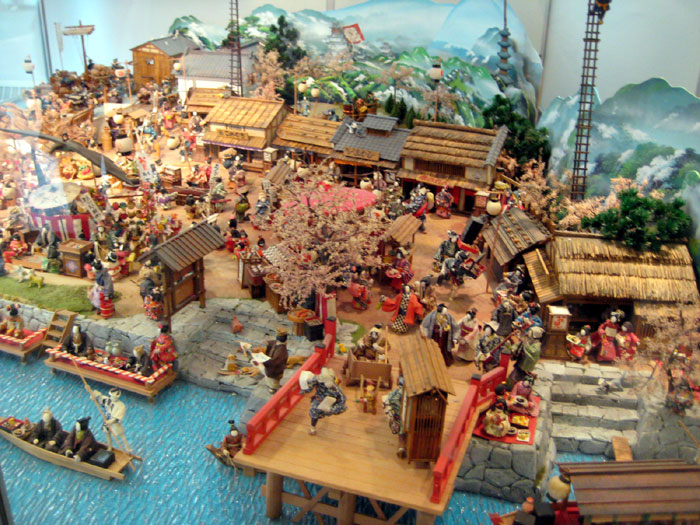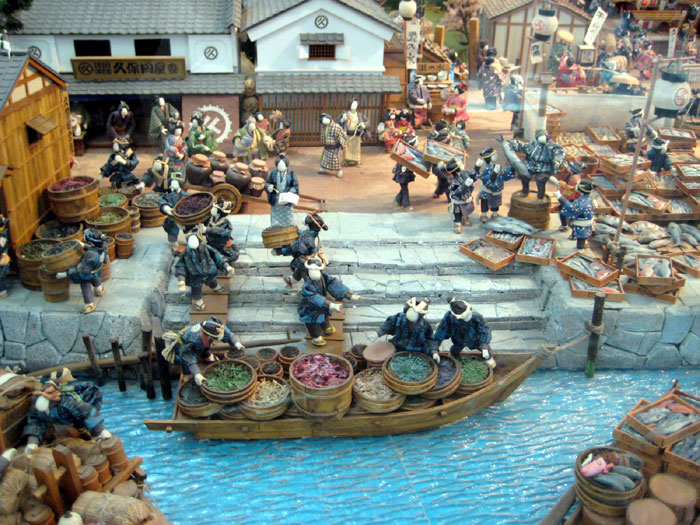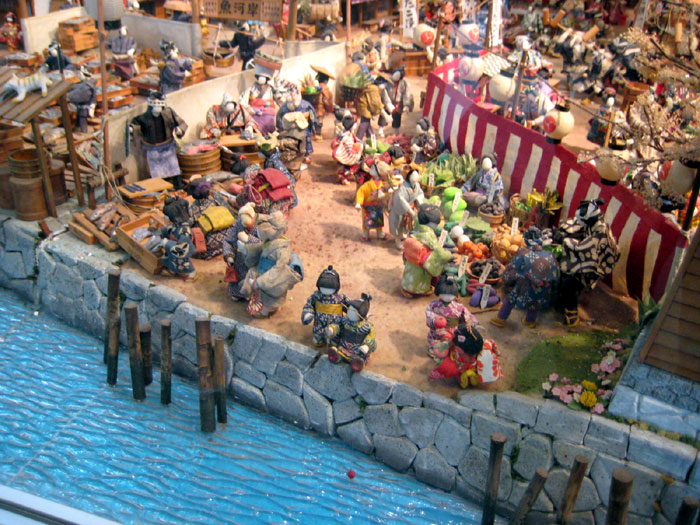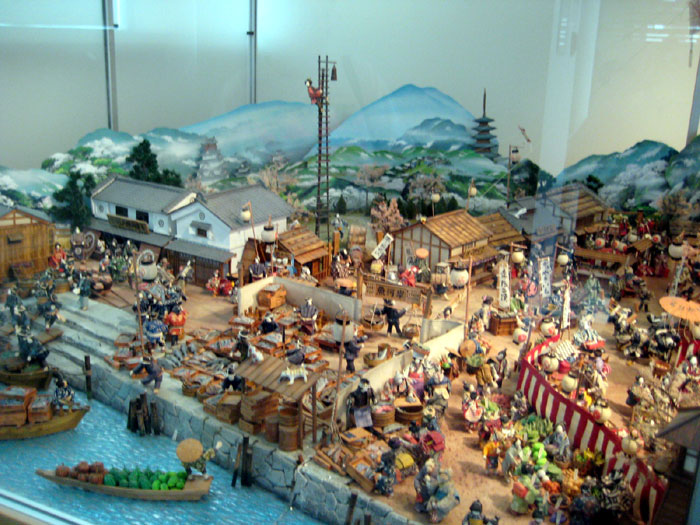 DERRO!
DERRO!"Scrawny, pale, little psychos", that is a great appellation for the race!
Scrawny- (from the Monstrous Manual): "Derro are one of the most dexterous of humanoid races (averaging 15-18), and their Armor Class must be adjusted for this." Usually, those that are dextrous are not depicted as hulking brutes...
Pale- (from the Monstrous Manual): "Derro are short, with skin the color of an iced over lake (white, with bluish undertones), sickly, pale yellow or tan hair (always straight), and staring eyes that have no pupils." When one considers most dwarfs in AD&D that's certainly off the beaten path.
Psychos- (from the Monstrous Manual): "The derro have made a name for themselves by their marked cruelty. It is said that a derro lives for just two things: to witness the slow, humiliating death of surface demihumans, and especially humans; and the perversion of knowledge to their own dark ends." And? they are chaotic evil to boot.
Tired of dark elves being overdone, "angsty" and lame? Throw them out the window or at least out of the Underdark. That's basically what I've done with my "legendary" World of Galena. (1) With the derro in place there is no need for namby-pamby dark elves. In all seriousness I like dark elves just fine, I just find them overdone or at least the cat is out of the bag when one considers "the big reveal" of G3- Halls of the Fire Giant King. Most often I do not feature dark elves in my games and usually steer players away from them, I'd otherwise they prefer they play gnome illusionists (1). Thus enter the derro.
Derro are a creation of Gary Gygax and first make their appearance in S4- The Lost Caverns of Tsojcanth. It is possible that the derro are based on "deros" in the stories of Richard Sharpe Shaver which appeared in Amazing Stories, a pulp mag from the 1940s. Given that Gary didn't elaborate too much on this I'm inclined to believe the probable origin. Also given Gary predilections towards pulp for his sources and the fact that he was a well-read man? More then likely for their origin.
Whats not to like? To start with from the strategic level, derro are very scalable. I think one of the most overlooked aspects of them is a DM could use them not just at low levels, but at high levels as well. As the PCs rise start throwing some derro with class levels at them, have them tote out more charmed umber hulk and other various slaves. Spell casting via the higher level savants is another boon and an effect that the DM can use strategically.
At the tactical level Derro, properly used can be tough to combat, taken from short companion guide I threw together a few years back called "The Menace of the Derro" here are some of their main high-level tactical pros:
- 30% Magic Resistenace
- Small in size (S); this is not an obvious advantage, but they may take less damage from certain weapons; plus not being large creatures they do not take large damage obviously. This is of prime importance as the character rise in levels. An ancillary benefit to their size is the fact that unless the group is entirely composed of dwarves they are going to have a hard time using derro sized weaponry and armor; selling these items is fine, but this has the practical effect of them having lots of high powered armor. This functions in a manner similiar to how Gary gave the dark elves magic items without having worrying about the PCs having tons of extra magical items.
- Automatically possess the Blind Fighting proficiency due to superior hearing (see above). Additionally due to their keen hearing a derro of any HD may Hear Noise as a thief, with a 10% chance per Hit Die, example a 3 HD derro may hear noises with a base chance of 30%. A secondary function of this ability is that all derro possess the sound analysis proficiency from the 1st edition Dungeoneer’s Survival Guide. With this, derro are very difficult to surprise.
- They are cunning and intelligent in combat; play them as such.
- Savants have genius level intelligence use that as well.
- Savants have spell-casting capabilities; these are increased in my campaign world.
- Savants can use any magical item, even if they don’t know command words (where applicable).
- Savants can have weird magical effects to their spells; feel free to make them unusual
- All derro savants and apprentice savants can instinctively use read magic and comprehend languages an unlimited number of times per day.
Derro high level savants will often have 2d4 Umber Hulks as servants through charm monster spells.
 In terms of Cons or negatives? There are only a few:
In terms of Cons or negatives? There are only a few:- Only have a Movement rate of 9; players will most often be able to outrace them.
- Infravision is only 30’; lowest of all the underground races.
- Derro are chaotic evil; As such they can be prone to the strife this alignment is known for. Another issue to consider is if your PCs have a paladin and he gets the inevitable holy avenger...
- Sunlight- the effects of sunlight are vague in the 2nd edition Monstrous Manual. However Dragon #241 has a much more complete discussion of effects: All derro are nauseated by direct sunlight touching their skin, losing 1 hit point per hour of exposure and suffering a -2 to all combat rolls, defensive adjustments, and saving throws while exposed. Hit-point losses are slow to heal if curative magic is not used; only 1 hit point per day maximum will be healed by complete rest, so a derro left outdoors will lapse into a coma and die after a few days of a condition resembling heatstroke. All spells and magical powers that duplicate prolonged sunlight (such as continual light) have this same effect, though the light spell, flashes of bright light, and normal bonfires, torches, and lanterns do not.
 All in all, these monsters are bad-ass. On top of that they got their own box set, the Night Below. That's enough for a adventure and a campaign setting all in one. Need a review of Night Below? Here is a pretty balanced one. Derro appear in a number of modules and articles, here are but a few (this is by no means complete):
All in all, these monsters are bad-ass. On top of that they got their own box set, the Night Below. That's enough for a adventure and a campaign setting all in one. Need a review of Night Below? Here is a pretty balanced one. Derro appear in a number of modules and articles, here are but a few (this is by no means complete):- Dungeon #20 “The Ship of Night”
- Dungeon #44 “Train of Events”
- Dungeon #79 “Cloudkill”
- Dragon #241 “Legacies of the Suel Imperium”
- Greyhawk Ruins
- WGA3- Flames of the Falcon
- From the Ashes- Greyhawk boxed set
- Doomgrinder
Another great point about the derro? They appear in the best module of all time: UK4 When a Star Falls. I think I might need to write up a blog post about that, my favorite monster and my favorite module? "Two great tastes that go great together." (3)
So to recap. Your players lamenting the drow and you need a different race to take their place in you games? Look no further then the derro. I also think that properly panned out, a TPK could very easily be accomplished in my not so humble opinion.
Another great avenue is that they hate humans and demi-humans this gives them even more reasons to be raiding on the surface then the deep dwelling dark elves. Throw in that a local communcity of derro are undergoing a Uniting War and a lot of upheavel can be thrown into a campaign, of which the PCs can be stuck in the middle of. Couple this with the events of Kingdom of the Ghouls in Dungeon #70 and a DM has all of the Underdark political intrigue he could want.
(1) If you know anything about me you know how much I like illusionists or gnomes, or both...
(2) In joke- as in Dwimmermount is/was "legendary" (chortle).
(3) Hey I was a pre-teen in the 80s? What do you expect?
























